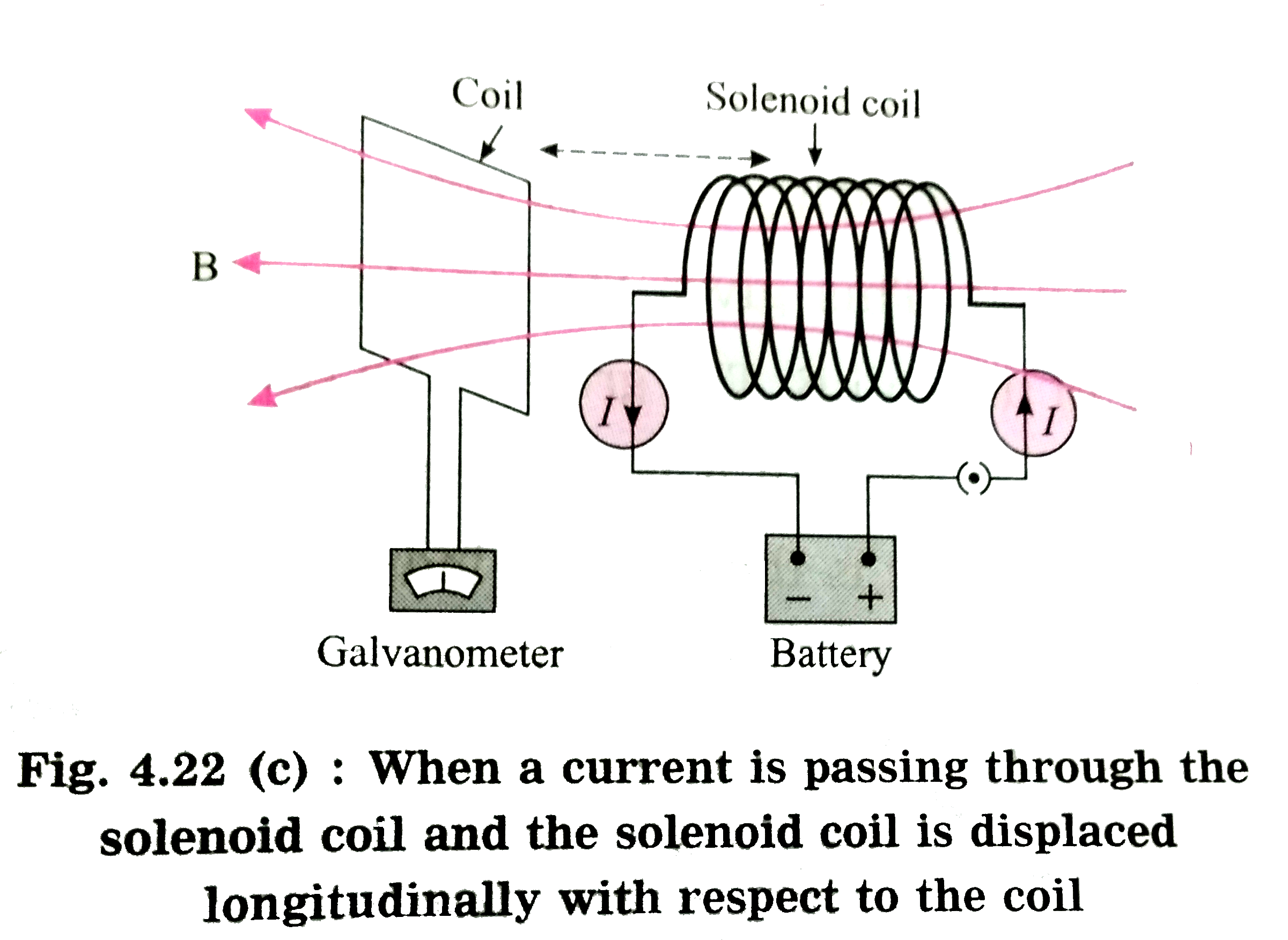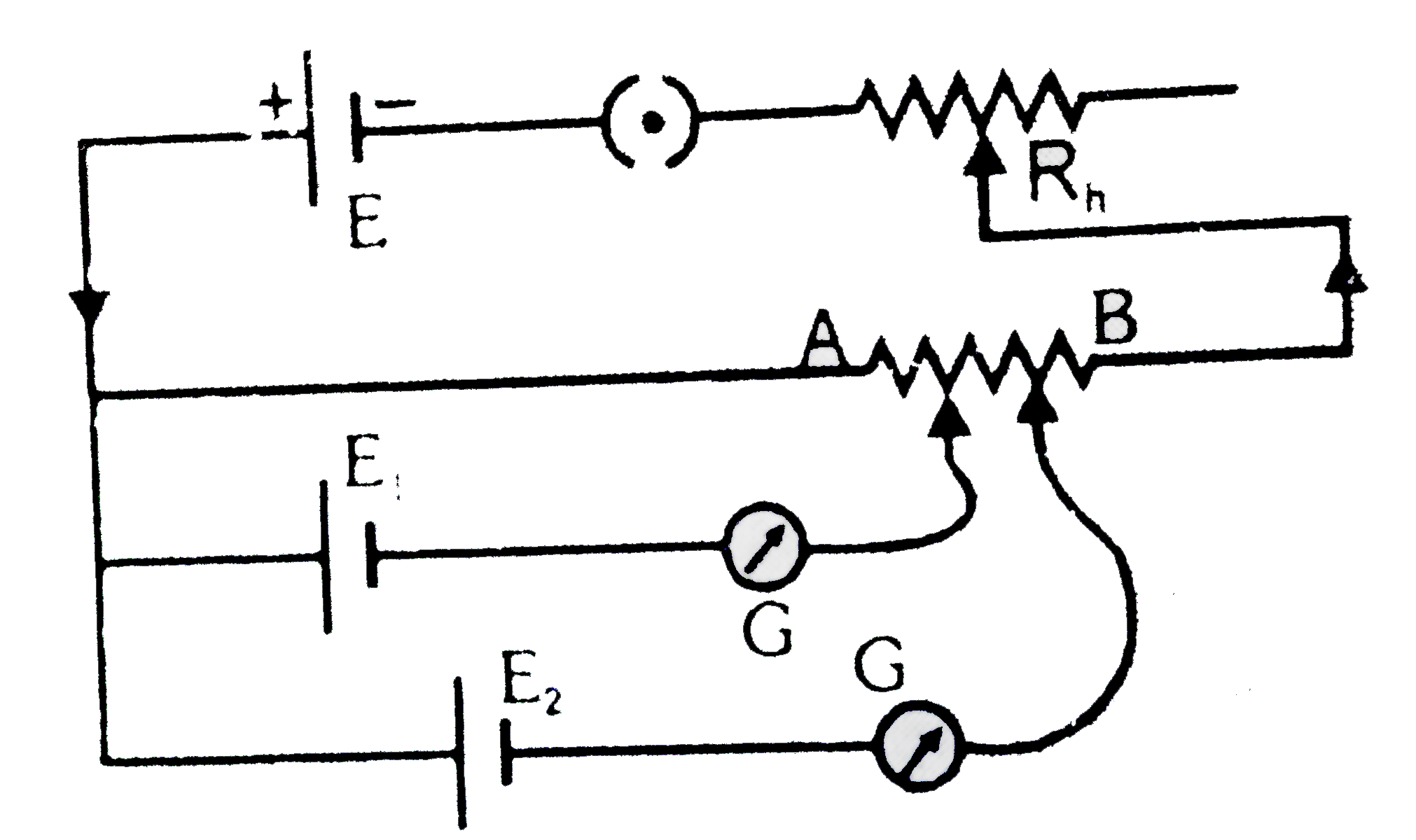Complete the circuit as shown in figure (a). Discuss about and select the components as required. In this experiment, if we open the plug key and make the current zero in the coil, the pointer of the galvanometer deflects to a side and quickly comes back to zero. If the current in the coil is started again, the pointer again deflects to the other side and then returns quickly to zero. Now when the electrical current is flowing through the solenoid coil and the solenoid coil is displaced with respect to the coil, the current is still produced in the coil.


What can be inferred from these two experiments ?
Text Solution
Even if the solenoid coil is kept stationary, a change in current in the solenoid coil produces a current in the coil. If the solenoid coil is moved towards or away from the coil, we see a deflection in the galvanometer [Fig. 4.22 (c)] Also, the faster is the displacement of the solenoid, larger is the deflection of the galvanometer pointer. If the current in the solenoid coil is changed, a current is produced in the coil or if the solenoid coil is moved towards the coil, then also a current is produced in the coil.
|
Topper's Solved these Questions
- EFFECTS OF ELECTRIC CURRENT BOOK - NAVNEET PUBLICATION - MAHARASHTRA BOARDCHAPTER - EFFECTS OF ELECTRIC CURRENT EXERCISE - Find out
1 Video
- EFFECTS OF ELECTRIC CURRENT BOOK - NAVNEET PUBLICATION - MAHARASHTRA BOARDCHAPTER - EFFECTS OF ELECTRIC CURRENT EXERCISE - Use your brain power
2 Videos
- EFFECTS OF ELECTRIC CURRENT BOOK - NAVNEET PUBLICATION - MAHARASHTRA BOARDCHAPTER - EFFECTS OF ELECTRIC CURRENT EXERCISE - Observe and Discuss
2 Videos
- DISTINGUISH BETWEEN THE FOLLOWINGBOOK - NAVNEET PUBLICATION - MAHARASHTRA BOARDCHAPTER - DISTINGUISH BETWEEN THE FOLLOWINGEXERCISE - Animal Classification
1 Video
- EXPLANATION AND GIVING CONCEPTS BOOK - NAVNEET PUBLICATION - MAHARASHTRA BOARDCHAPTER - EXPLANATION AND GIVING CONCEPTS EXERCISE - ANIMAL CLASSIFICATION
2 Videos
Similar Questions
Knowledge Check
The deflection in a moving coil galvanometer is
Ainversely proportional to number of turns.Binversely proportional to current flowing.Cinversely proportional to area of the coil.Ddirectly proportional to the magnetic field strength.In a tangent galvanometer a deflection of 30∘ is obtained wth a certain current flowing through the coil. If the current is tripled, the deflection obtained will be
A45∘B60∘C90∘D30∘In a moving coil galvanometer, the deflection of the coil θ is related to the electric current i by the relation
Ai∝tanθBi∝θCi∝(θ)2Di∝(√θ)
When a current is passed in a moving coil galvanometer the coil gets deflected because
View SolutionWhat is the effect on the deflection of a galvanometer attached to a coil, if a magnet is moved closer to the coil?
View SolutionIn the following diagram the deflection in the galvanometer in a potentiometer circuit is zero. Then:-

View SolutionIn the following diagram the deflection in the galvanometer in a potentiometer circuit is zero. Then:-

View SolutionIn a moving coil galvanometer the deflection ϕ of the coil is related to the electric current I by the relation
View Solution
